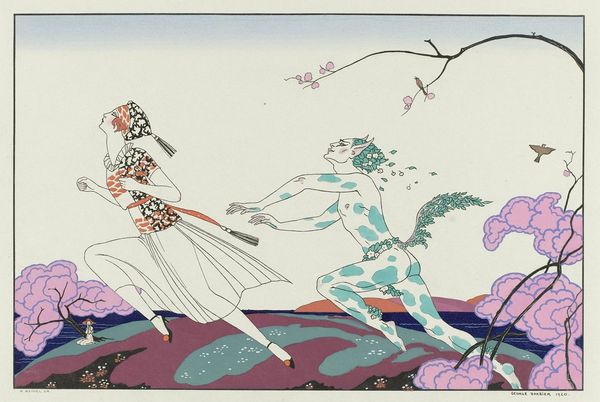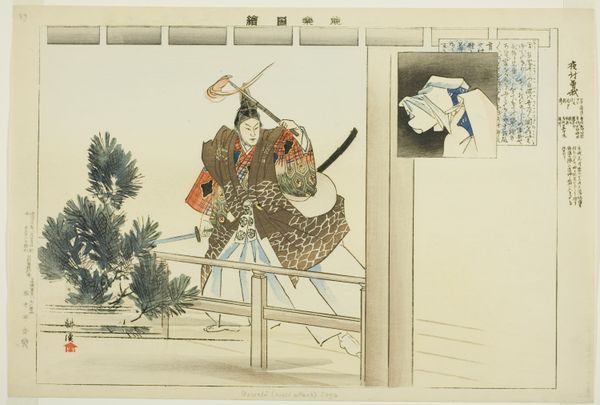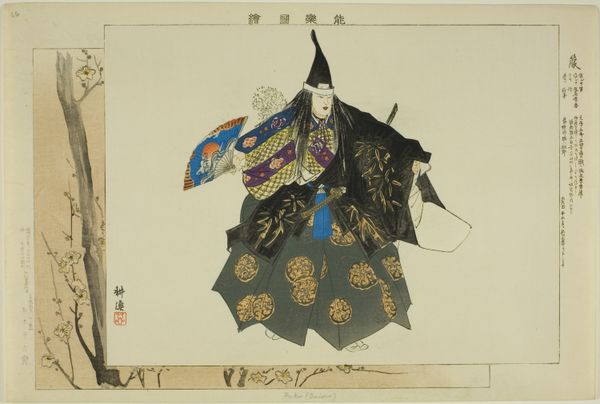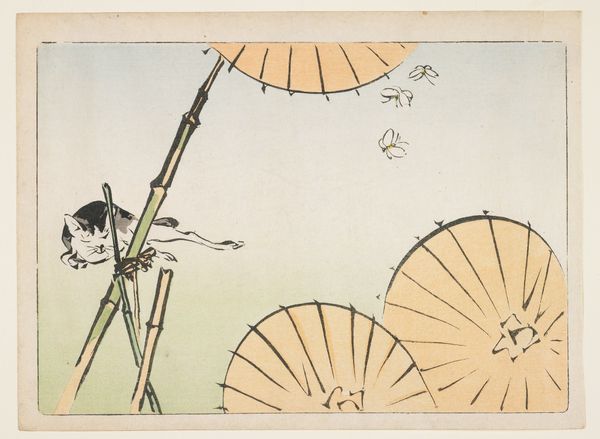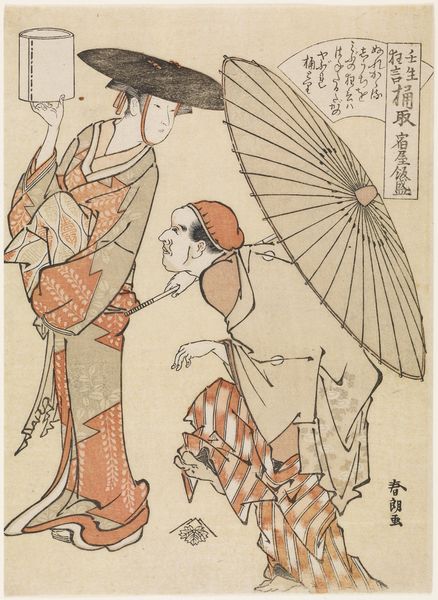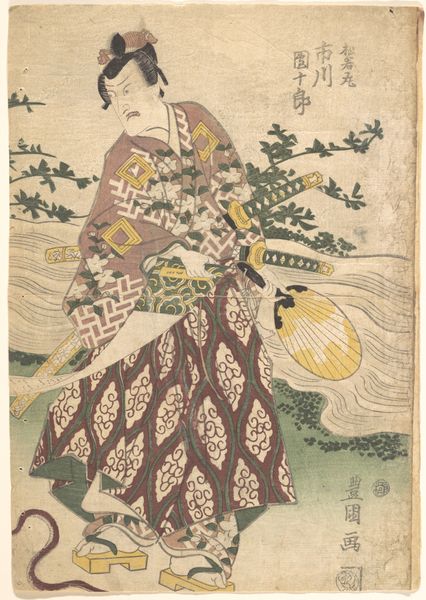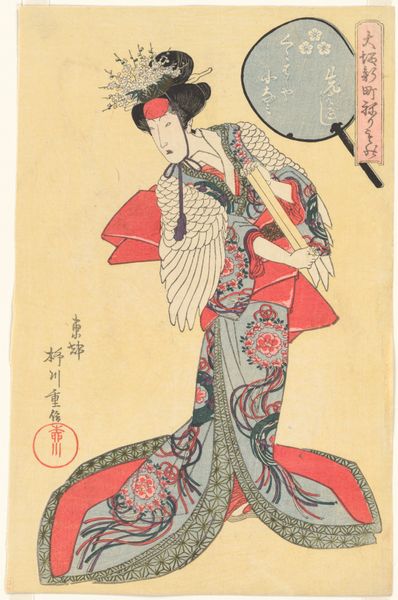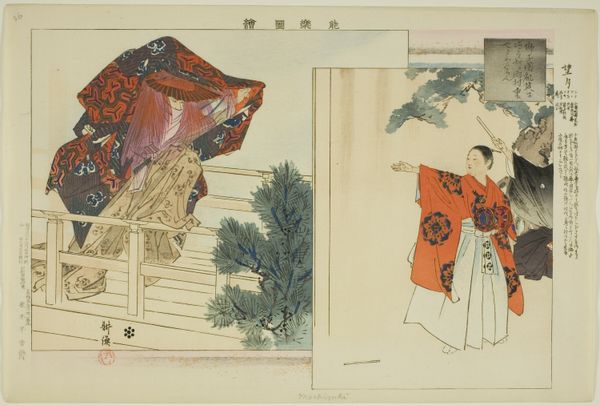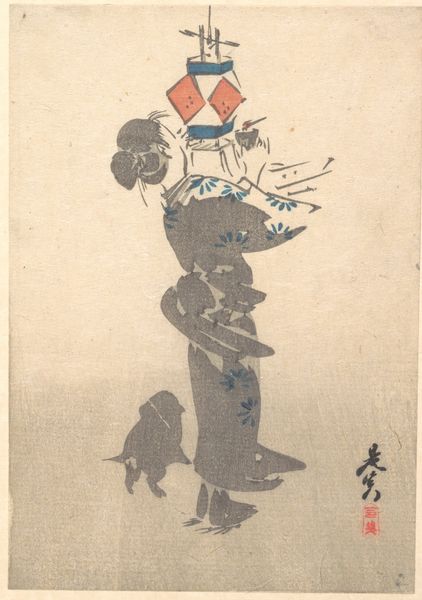
Fuji, from the series "Pictures of No Performances (Nogaku Zue)" 1898
0:00
0:00
Dimensions: Approx. 25.2 × 37.4 cm (10 × 14 4/3 in.)
Copyright: Public Domain
Curator: Look at this striking woodblock print titled "Fuji, from the series 'Pictures of No Performances (Nogaku Zue)'" by Tsukioka Kogyo, created in 1898. It now resides here at the Art Institute of Chicago. Editor: Ah, a dancer swathed in what looks like wisteria! There's a wistful, melancholic air about it... the way she's turned away, almost hiding amidst the flowers, you know? Curator: Indeed. This print depicts a scene evoking elements of the Noh theater, focusing on costumes but divorced from specific narratives. Consider the significance of her attire: How does it frame our understanding of performance and identity in the late Meiji era? Editor: That kimono... it's all purple shadows and tiny blooms, like secrets whispered on silk. I keep wondering what the 'no performance' refers to – is it a critique? Or just a spotlight on the *essence* of drama without the fuss of plot? Feels postmodern before its time, you know? Curator: That’s astute! The ‘no performance’ subverts expectations. It offers commentary on performativity within established artistic structures by stripping away traditional action, redirecting our gaze to the artistry of representation itself. How is the costuming communicating layers of gender, status and societal position? Editor: Stripping away is a very generous term! It’s gorgeously vague. Maybe I just read her posture, hunched slightly – vulnerable, but framed in luxurious garments that should bestow status. Like a celebrity hiding behind sunglasses... beautiful, but undeniably burdened. I almost want to write a poem about her. Curator: Such layering allows us to examine cultural attitudes towards representation and femininity. Consider this woodblock as an archive holding a cultural moment and its shifting ideologies on national identity. Editor: You’ve got me pondering performance now! The absent performance highlights that every movement—every stitch, shade, or silent glance— communicates. In essence, absence can often resonate as profoundly as a theatrical gesture itself, like holding breath, waiting for meaning to fill in the pause… Curator: Precisely! It highlights a negotiation that interrogates historical perspectives through embodied gestures captured in prints. Editor: Well, it made *me* want to pause! I will be thinking about this image for a good long while.
Comments
No comments
Be the first to comment and join the conversation on the ultimate creative platform.

